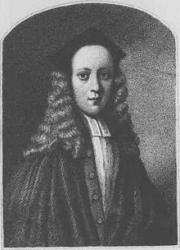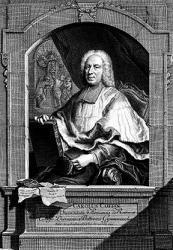Planning worship?
Check out our sister site, ZeteoSearch.org,
for 20+ additional resources related to your search.
- |
User Links
Person Results
Ken Barker
b. 1955 Meter: 6.6.6.6 Arranger of "O THE BLOOD OF JESUS" in Baptist Hymnal 2008
Ken Barker
Caspar Ett

1788 - 1847 Meter: 6.6.6.6 Composer of "ST. MARTIN" in The Cyber Hymnal Born: January 5, 1788, Eresing, Bavaria.
Died: May 16, 1847, Munich, Germany.
Buried: Alten Südfriedhof, Munich, Germany.
Caspar [Kaspar] Ett was a German composer. At age nine, he became a chorister in a Benedictine abbey, then went to the Elector's School in Munich. In 1816, he was appointed organist at St. Michael's Church in Munich, where he remained until his death. Caspar Ett composed several Masses and other Catholic church music. His works include Cantica Sacra (1840), Ave maris stella, Stabat Mater for two mixed choirs, Attollite portas, Haec Dies, Laudate Dominum, Pange lingua, Tantum Ergo Sacramentum, Requiem in C minor for choir and orchestra or choir and organ.
--www.free-scores.com/
Caspar Ett
Sylvia G. Dunstan
1955 - 1993 Meter: 6.6.6.6 Author of "O mystery profound" After a brief, arduous battle with liver cancer, Canadian Sylvia Dunstan died in 1993 at the age of 38. For thirteen years, Dunstan had served the United Church of Canada as a parish minister and prison chaplain. She is remembered by those who knew her for her passion for those in need, her gift of writing, and her love of liturgy.
Sing! A New Creation
Sylvia G. Dunstan
Bertram Luard-Selby
1853 - 1918 Person Name: Bertram Luard Selby (1853-1918) Meter: 6.6.6.6 Composer of "ECCLES" in Ancient and Modern
Bertram Luard-Selby
John Byrom

1692 - 1763 Meter: 6.6.6.6 Author of "My Spirit Longs for Thee" in The Cyber Hymnal John Byrom was born in 1691, at Manchester, where his father was a linen-draper. He entered Trinity College, Cambridge, 1708; became a Fellow of the College in 1714; took his M.A. in 1716, and then proceeded to Montpelier, where he studied medicine. He afterwards abandoned medicine, settled in London, and obtained his living by teaching a system of shorthand, which he had projected. He was elected a member of the Royal Society in 1724. He died Sept. 28, 1763. The first edition of Byrom's poems appeared in 1773, in two volumes. A more complete edition was published in 1814. Byrom did not seek publicity as an author, but wrote verses only for recreation.
--Annotations of the Hymnal, Charles Hutchins, M.A., 1872
======================
Byrom, John, M.A., F.R.S., born at Manchester, Feb. 29,1691-2, baptized the same day, and educated at Merchant Taylors' School, and Trinity College, Cambridge, where he graduated B.A. 1712 ; M.A. 1715. He was elected a Fellow of his College in 1714. After studying medicine for a time at Montpellier, he returned to London, and earned his livelihood by teaching shorthand. Elected F.R.S. in 1724, and succeeded to the family estates about the same time. He died Sept. 28, 1763. His Poems were first published in 1773, in two volumes. In 1814 a more complete edition was issued by Nichols, of Leeds. From these Poems less than half a dozen hymns have come into common use. One of these, however, has a repu¬tation which has extended to all English-speaking countries. We refer to his "Christians, awake!" (q.v.). His hymn, "My spirit longeth for Thee," is also worthy of attention.
-- John Julian, Dictionary of Hymnology (1907)
John Byrom
Charles Coffin

1676 - 1749 Person Name: Charles Coffin, 1676-1749 Meter: 6.6.6.6 Author of "God from on high hath heard" in The Methodist Hymn-Book with Tunes Coffin, Charles, born at Buzaney (Ardennes) in 1676, died 1749, was principal of the college at Beauvais, 1712 (succeeding the historian Rollin), and rector of the University of Paris, 1718. He published in 1727 some, of his Latin poems, for which he was already noted, and in 1736 the bulk of his hymns appeared in the Paris Breviary of that year. In the same year he published them as Hymni Sacri Auctore Carolo Coffin, and in 1755 a complete ed. of his Works was issued in 2 vols. To his Hymni Sacri is prefixed an interesting preface. The whole plan of his hymns, and of the Paris Breviary which he so largely influenced, comes out in his words.
"In his porro scribendis Hymnis non tam poetico indulgendunv spiritui, quam nitoro et pietate consulendum esse existimavi. Pleraque igitur, argumentis convenientia e purissiinis Scripturae Sacrae fontibus deprompsi quac idoneis Ecclesiae cantui numeris alligarem."
His hymns are described by a French critic as having less brilliancy than those of Santüil (q.v.), but more simplicity and unction. They number 100 in the edition of 1736. Translated into English by J. Chandler, I. Williams and others, are noted under their respective Latin first lines. [William T. Brooke]
-- John Julian, Dictionary of Hymnology (1907)
Charles Coffin
John Dykes Bower
1905 - 1981 Person Name: John Dykes Bower, 1905-81 Meter: 6.6.6.6 Composer of "AMEN COURT" in The New English Hymnal Sir John Dykes Bower CVO (13 August 1905 – 1981) was an English cathedral organist, who served in Truro Cathedral, Durham Cathedral and St Paul's Cathedral.
John Dykes Bower was born on 13 August 1905 in Gloucester. He was one of four brothers. Stephen Dykes Bower became a famous church architect.
He was educated at Cheltenham College and studied organ under Herbert Brewer, and was organ scholar at Corpus Christi College, Cambridge from 1922.
He was organist of:
Truro Cathedral 1926 - 1929
New College, Oxford 1929 - 1933
Durham Cathedral 1933 - 1936
St Paul's Cathedral 1936 - 1968
--en.wikipedia.org/wiki/
John Dykes Bower
William B. Bradbury

1816 - 1868 Meter: 6.6.6.6 Composer of "RIPPLE" William Bachelder Bradbury USA 1816-1868. Born at York, ME, he was raised on his father's farm, with rainy days spent in a shoe-shop, the custom in those days. He loved music and spent spare hours practicing any music he could find. In 1830 the family moved to Boston, where he first saw and heard an organ and piano, and other instruments. He became an organist at 15. He attended Dr. Lowell Mason's singing classes, and later sang in the Bowdoin Street church choir. Dr. Mason became a good friend. He made $100/yr playing the organ, and was still in Dr. Mason's choir. Dr. Mason gave him a chance to teach singing in Machias, ME, which he accepted. He returned to Boston the following year to marry Adra Esther Fessenden in 1838, then relocated to Saint John, New Brunswick. Where his efforts were not much appreciated, so he returned to Boston. He was offered charge of music and organ at the First Baptist Church of Brooklyn. That led to similar work at the Baptist Tabernacle, New York City, where he also started a singing class. That started singing schools in various parts of the city, and eventually resulted in music festivals, held at the Broadway Tabernacle, a prominent city event. He conducted a 1000 children choir there, which resulted in music being taught as regular study in public schools of the city. He began writing music and publishing it. In 1847 he went with his wife to Europe to study with some of the music masters in London and also Germany. He attended Mendelssohn funeral while there. He went to Switzerland before returning to the states, and upon returning, commenced teaching, conducting conventions, composing, and editing music books. In 1851, with his brother, Edward, he began manufacturring Bradbury pianos, which became popular. Also, he had a small office in one of his warehouses in New York and often went there to spend time in private devotions. As a professor, he edited 59 books of sacred and secular music, much of which he wrote. He attended the Presbyterian church in Bloomfield, NJ, for many years later in life. He contracted tuberculosis the last two years of his life.
John Perry
William B. Bradbury
William Farley Smith
1941 - 1997 Meter: 6.6.6.6 Adapter of "I WILL TRUST" in The A.M.E. Zion Hymnal
William Farley Smith
William Bullock
1797 - 1874 Meter: 6.6.6.6 Author of "We love the place, O God" in The Hymnal Bullock, William, D.D., a Missionary of the S. P. G. for 32 years, and sometime Dean of Halifax, Nova Scotia, and died. March 16, 1874. He is known to hymnody principally through his popular hymn (in its revised form by Sir H. W. Baker), "We love the place, O God" (q. v.). This appeared with other hymns of merit in his:—
Songs of the Church, Halifax, printed for the Author, 1854, Other hymns from the same work are in common use. All his hymns were “written amidst the various scenes of missionary life, and are intended for the private and domestic use of Christians in new countries deprived of all public worship," and are worthy of renewed attention. Dean Bullock also published Practical Lectures upon the History of Joseph and his Brethren, 1826.
-- John Julian, Dictionary of Hymnology (1907)
William Bullock


 My Starred Hymns
My Starred Hymns


